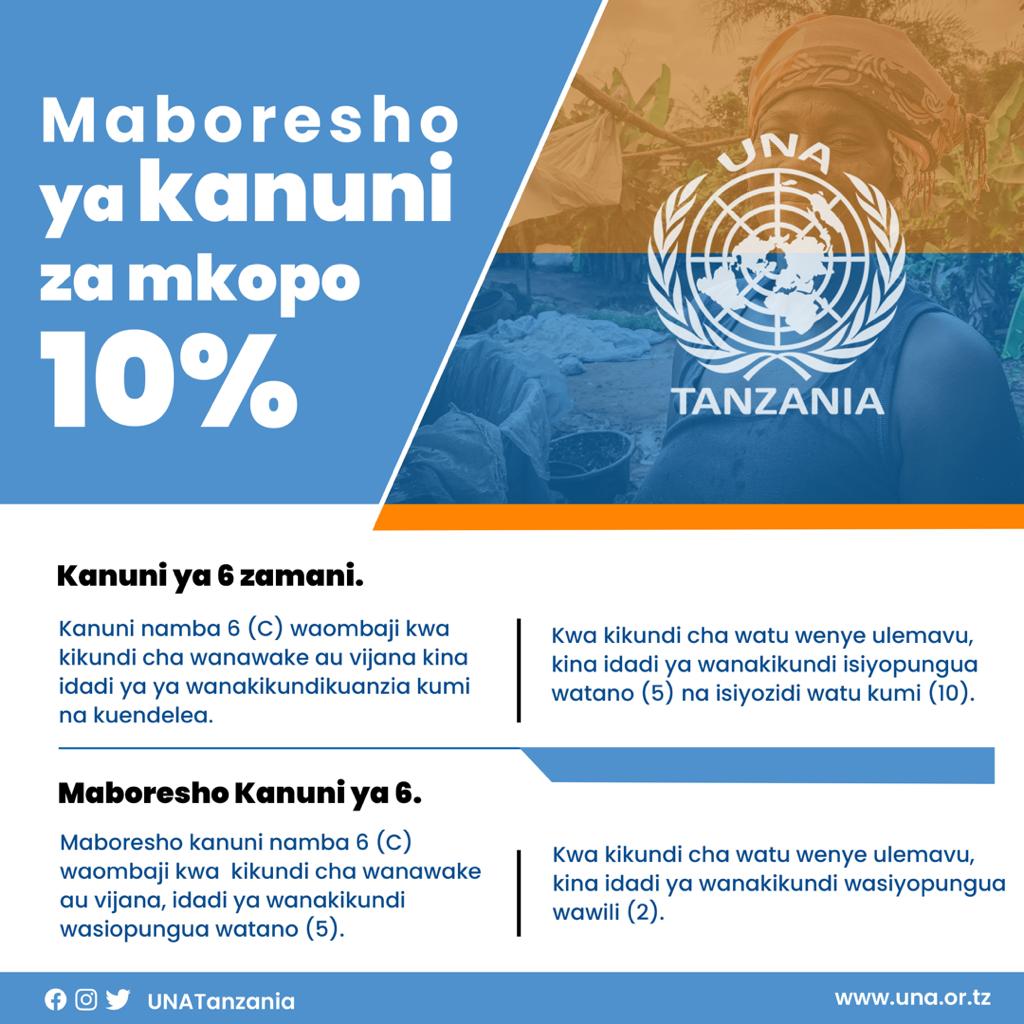
In the past 3 years United Nations Association of Tanzania has been engaging in advocacy work at national policy level to ensure effective administration of the 10% Empowerment Loans for Women, Youth and People with Disabilities groups at Local Government Authorities in Tanzania, with special interest in the youth 4% that goes to youth, but all the 10 % cuts across different groups of youth because women can access the other 4% and young people with disabilities can access the 2% allocated for people with disabilities. We have worked with the parliamentary youth groups, TAMISEMI, CSOs and the department of youth in the prime minister’s office.
In 2018, UNA Tanzania conducted a survey of 17 districts documenting success stories, challenges and recommendations from beneficiaries, LGAs and stakeholders (CSOs) working with young people in the 17 districts. The survey revealed that there was lack of universality in the administration of the 10% within the districts, different standards and interpretations of the law.Thus, the need to have the guidelines that will interpret the laws and regulations for smoother governance of the funds.
Using the findings, UNA Tanzania conducted several engagements with TAMISEMI which led to a joint recommendation that UNA Tanzania lead the exercise to produce the guidelines for the administration of the 10% district funds.
As advocates for the effective implementation of the empowerment fund, this is an important UNA Tanzania has accepted TAMISEMI’s proposition to collaborate in order to speed up the process of creating the guidelines. The guidelines will;
- Strengthen the management of fund for sustainability of loan and projects
- Enhance coordination and monitoring of 10% loans
- Strengthen loan repayment system
On our last meeting, TAMISEMI in partnership with UNA Tanzania and Policy Forum invited different stakeholders and Community Development Officers to go through the first draft of the guidelines that were development last November. This gave in new minds and light to making the guidelines more effective not only for the beneficiaries but also for the Community Development Officers who are in charge to issue and follow up on the loans.